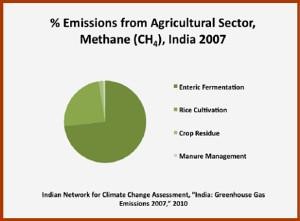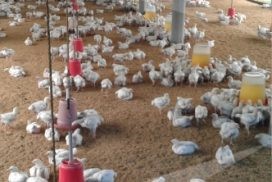

Reason to try plant-based in 2020
Improve health, Help environment and Love animals
Reason to try plant-based in 2020
Improve health, Help environment and Love animals
Plant-Based for a Healthier Planet
Modern farming has a catastrophic effect on our environment. It accelerates high energy consumption, global warming, water pollution and depletion, and loss of habitat conservation. Further, intensively confining animals in one place means large amounts of waste is concentrated and hence toxic to ground water, rivers and streams, and surface plant and animal life.
Dairy farms across the world are important contributors to pollution and global warming. United Nations FAO figures show that the dairy sector emitted 1,969 million tonnes CO2-eq [±26 percent] of which 1,328 million tonnes is attributed to milk production. This happens because of a process known as enteric fermentation, during which cows produce copious amounts of methane, a greenhouse gas roughly 20-24 times more potent that carbon dioxide.
As a country, India holds 16% of the world’s population while owning only 4% of the world’s water resources. The process of milk production is one that requires huge amounts of water. An animal producing 10 litres of milk a day would directly consume about 100 litres of water. The total amount of water required to make one litre of milk is estimated to be around 1020 litres!
Similarly, 1 kg of chicken requires approximately 3546 litres of water, and one egg alone requires around 200 litres of water! Clearly, water is becoming a fast depleting source in places with intensive farming.

Deforestation & Wildlife
The per capita availability of forestland in India, at 0.08 hectares, is one of the lowest in the world, against an average of 0.5 hectares for developing countries and 0.64 hectares for the world. (National Forestry Action Programme, India). Industrialisation, including that of the livestock sector, and urbanisation are eating into the share of forestlands.
- Space for Farms – The Government is keen on promoting dairy and eggs. As we don’t have unlimited space, forests, grasslands and scrublands make way for farms.
- Space for Growing Feed – New agricultural lands are being acquired or converted for cash crops like corn, soya and Napier grass., resulting in deforestation.
- Space for Grazing –With India aiming for the pink revolution by becoming world’s largest beef exporter, cattle and buffalos are being bred at an alarming rate. More land for grazing is therefore being created by displacing natural vegetation.
- Storage Space – The space used for storing cattle feed, poultry feed, refrigerated meat and for setting up milk processing units would add up to a few thousand hectares.
- Coal – Farms need electricity which needs coal. There are however, very few coalmines that have been built without mass deforestation.
- Paper – Tetra packs for milk products, paper board trays for eggs and cartons are a few items that use a large amount of paper and board, which are often made from trees and grasses.
Beyond direct confrontations, even cattle grazing in Indian forests are a threat for wildlife. Domestic cattle are carriers of various diseases which can wipe out wild bovines (Gaurs) and deer. Anthrax, and Foot and Mouth disease are just two of these deadly diseases. And remember, there is nobody in the forest to vaccinate or treat the wild ruminants. Now add to this the smaller animals killed by burning forest lands, or cutting down trees in a bid to extend our farms or pastures.




Pollution
Farming practices across the world are known for their huge contribution in degrading soil quality. Clearing of lands expose the top soil to wind and water erosion, and the soil cover is lost easily.
Tons of chemical fertiliser and pesticides can damage soil by killing off all the beneficial bacteria and insects that naturally inhabit the soil. Further, chemical residues of fertilisers and heavy metals stay in the soil and the toxic soil might take decades to get back to its previous state.
Manure, sewage runoff from farms, blood and offal can be good for adding to soil fertility in controlled amount, but when in excess they create more problems.
- Water Pollution
Animal wastes are dumped as manure in open fields, in much larger quantities than the soil bacteria can process them. The excess manure finds its way to the water bodies nearby or leeches into the ground water.
Pesticides, hormones and antibiotics used in the farms easily find their way to the nearby canals and rivers, killing fishes in thousands and choking other aquatic life. Eventually these chemicals run down to the sea, causing immense damage to the marine life.
In 2003, California’s Chino basin estimated that it would spend more than $1 million per year to remove nitrates from its drinking water. This was a result of the abundance of local dairies and the relatively rapid transformation of nitrogen in manure into nitrates, which were ultimately transported into the community’s drinking water supply. (U.S. Environmental Protection Agency. 2003. National Pollutant Discharge Elimination System permit regulation and effluent limitation guidelines and standards for concentrated animal feeding operations (CAFOs); final rule. February 12. Federal Register 68(29):7176, 7238.) Unfortunately, such studies are either not carried out or published in India.
- Air Pollution
The microbial breakdown of organic carbon and nitrogen compounds in farm wastes contribute to air pollution by adding these to the atmosphere in large quantities. Other than this, animals on livestock farms are often fed low-quality grain diet that is difficult to digest. These feeds, used for fattening animals quickly and cheaply, cause chronic indigestion resulting in higher methane emissions.
Suspended Particulate Matter (SPM), the particles floating in the air, causes bronchitis and asthma in people exposed to it over a period. It can also cause of cardiac problems including disturbance in heart rhythm and even heart attacks.
Carbon dioxide is produced by animal respiration and by burning of fuels. Though not a poisonous gas itself, levels above normal causes breathlessness and dizziness in humans, and can kill confined people or animals by suffocation. The major contributor of carbon dioxide is decomposing manure.
Hydrogen sulphide in high levels cause problems to the skin, eyes, respiratory tract and nervous system. It might lead to cardiac problems, seizures, coma or even death. Prolonged exposures at low levels are known to cause low blood pressure, headache, cough, and psychological dysfunction. Hydrogen sulphide is mainly generated from pig farms and rotten eggs discarded by poultry industry. The National Institute for Occupational Safety and Health (NIOSH) has deemed hydrogen sulphide to be “a leading cause of sudden death in the workplace.”
Ammonia can cause irritation of the eyes, skin, and respiratory tract. It is released in huge quantities by factory farms raising chicken and pigs. Dairies that throw the cow dung slurry outside also generate a lot of ammonia.
Methane is a major contributor to climate change. According to the EPA, it is 23 times as potent as carbon dioxide and is the second most important contributor to the greenhouse effect, now accounting for 16 percent of global greenhouse gas emissions from human activity.
- Global Warming
“India is the world’s fifth largest emitter of greenhouse gases (GHGs). Its overall emissions rose more than 50 percent between 1994 and 2007… India’s livestock, particularly the enormous population of cows and buffalo, are a significant source of GHGs. In 2007, the livestock sector produced 334 million tons of CO2 eq. Enteric fermentation, from the digestive processes of ruminants, including cows, buffalo, sheep, and goats, is responsible for 63 percent of this or 212 million tons of CO2 eq.
India’s emissions of methane (CH4) from livestock are larger than any other country’s. Methane has at least 21 times the global warming potential of CO2. Producing feed crops for farmed animals also has climate impacts, with significant quantities of CO2 emitted through manufacture of chemical fertilizers and clearing of land and forests to make way for agriculture.”

Other Dangers
- Pesticides
Livestock farming industry relies heavily on pesticides, besides the hormones and feed supplements. Pesticides are used in both cultivation of feed crops and raising of farm animals.
The pesticides used in the crop fields contaminate the water, air and soil, and cause harm to the labourers associated. These pesticides accumulate in the plant body and later in a much larger scale in the body of the animals that eat these feeds. Moreover, pesticides are used to save the animals from different insect and fungal infections. These also accumulate in the body of the animals.
We are exposed to pesticides everyday through our diet, be it plant based or animal based, but animal-based diets certainly provide us with double dose of pesticides and at a much higher accumulated concentration.
- Plastic Waste
The packaging of feed and the animal products themselves use a huge amount of plastic other than paper and foils.
Take a look at the dairy product shelf in the super store. Sachets of milk, jars of yogurts, cups of dahi and packs of butter are all made of plastic or coated with it. Similarly, the meat and fish products are also wrapped in plastic.
- Destruction of Biodiversity
Livestock farming encourages monoculture. Fields of soya or corn are the sources of feed. Often these are again of genetically modified variety or hybrid varieties that are not native to our places.
In the case of animals also, fast growing hybrid varieties are needed. Not only are we losing many of our native crop breeds and wild plants, but the white revolution has caused immense decline in our native cattle strains and native chickens.
This is not only unsustainable but dangerous for the critical ecological balance needed for our survival.



Energy Consumption
The amount of electricity, oil, coal, and firewood used to run the factory farms and raise the feed crops consume a lot of energy. The resulting release of carbon dioxide worldwide is estimated at 90 million tons (2012).
Raising Feed Crops – Feed crops like high yield corn and soya need a huge effort in tilling, land preparation, watering and harvest. In most cases, the entire operation is mechanised and heavily dependent on Diesel oil.
Feed Mills – In order to cater to the ever growing needs the livestock industry, mills are being set up by corporate giants to produce readymade feed. One such mill in West Bengal produces 40 bags of feed per minute (each bag of 35 kilo feed).
Housing-Poultries or dairies are often a few kilometres long. Think about the energy used for the construction, maintenance, transport, air conditioning, heating, lighting, watering, refrigeration and cleaning operations of such large scales.
Transportation-Transportation of live animals and processed meat, dairy and eggs is carried out mostly by road and rail, thus using a lot of Diesel.
Packaging, Refrigeration and Distribution – The frozen meat/fish/egg sections occupy the largest chunk of space in the modern groceries. Enormous amount of energy is wasted to pack and refrigerate these food items.
